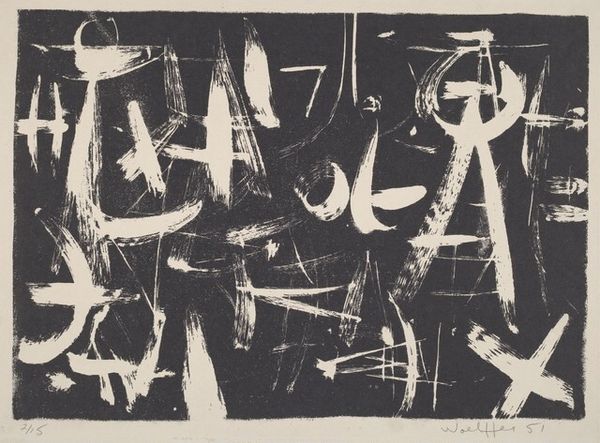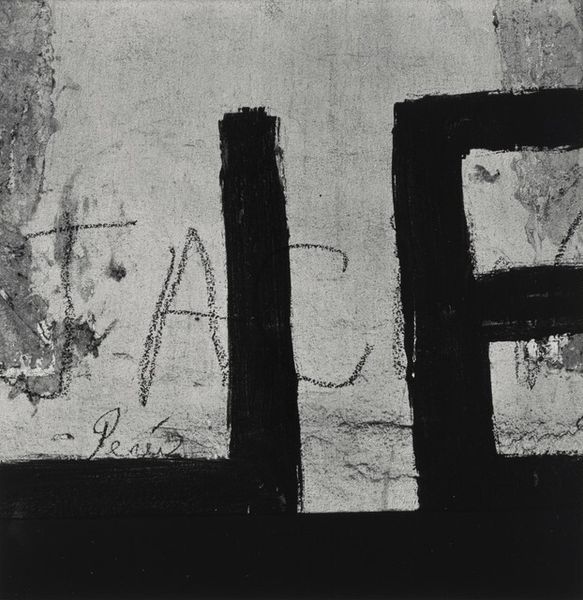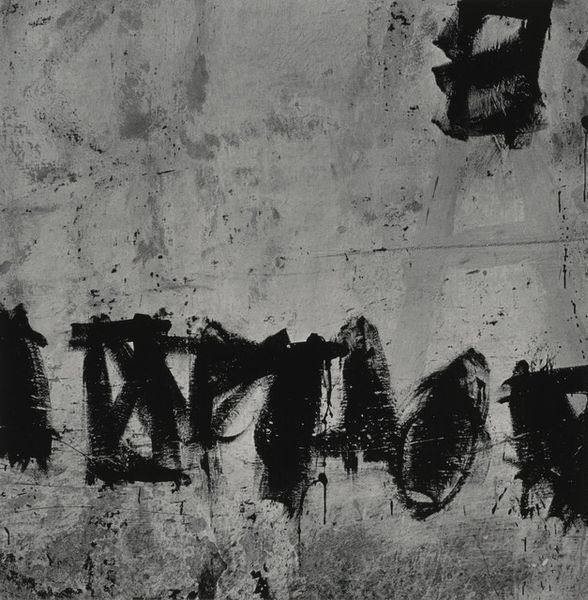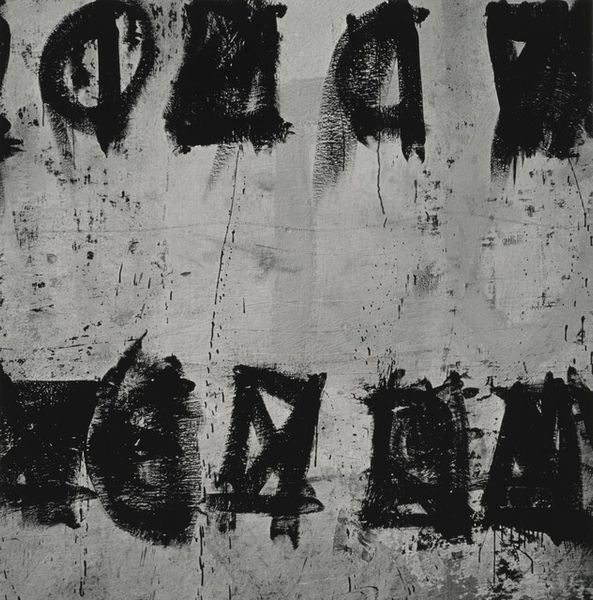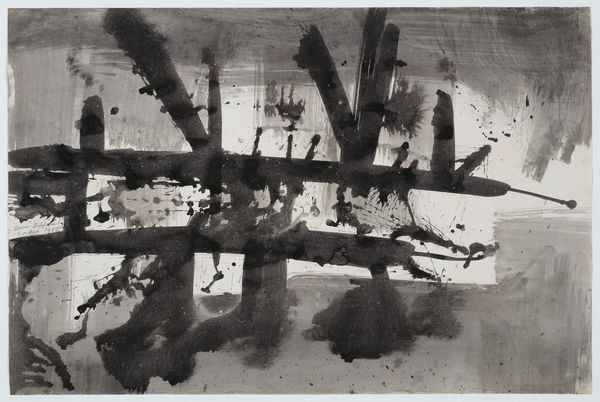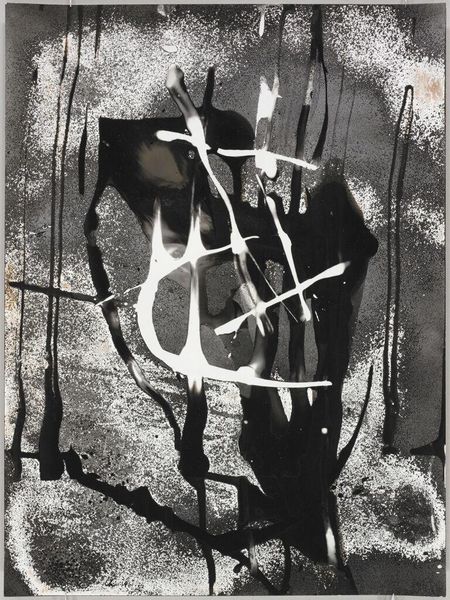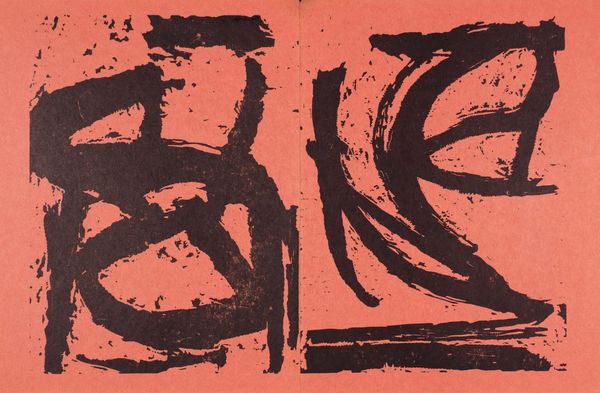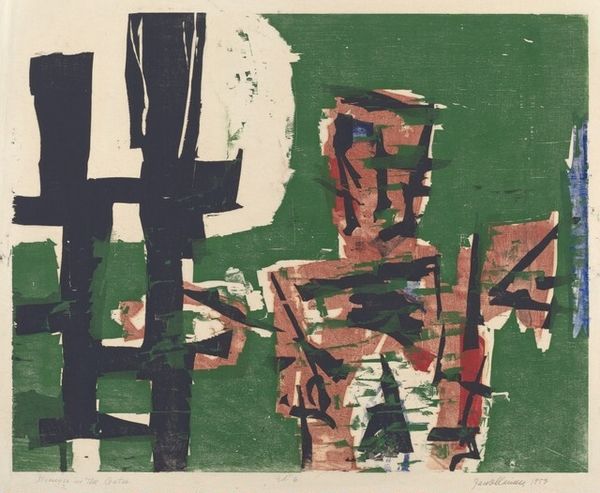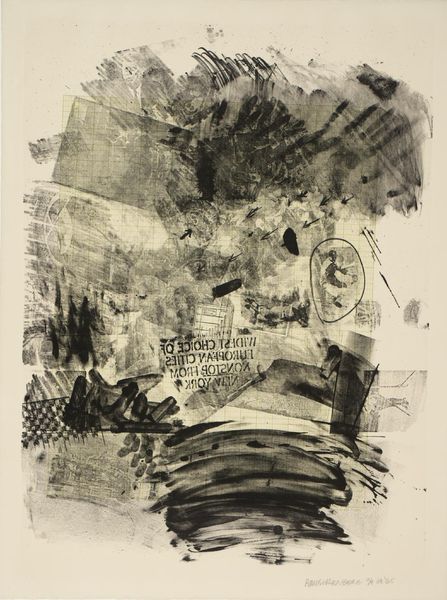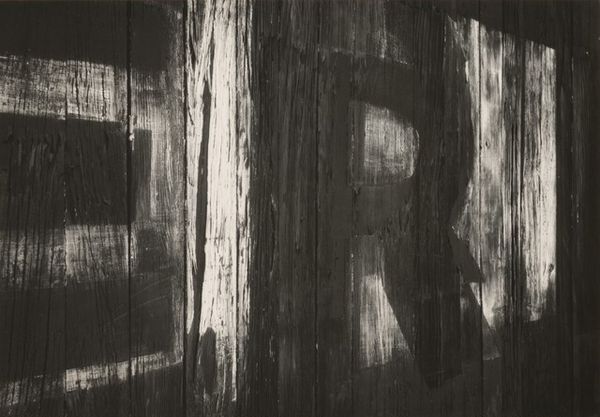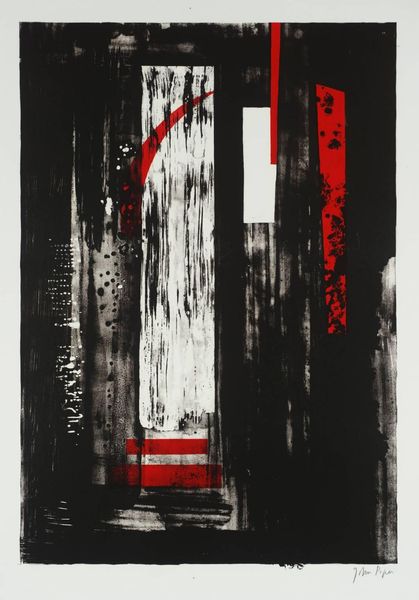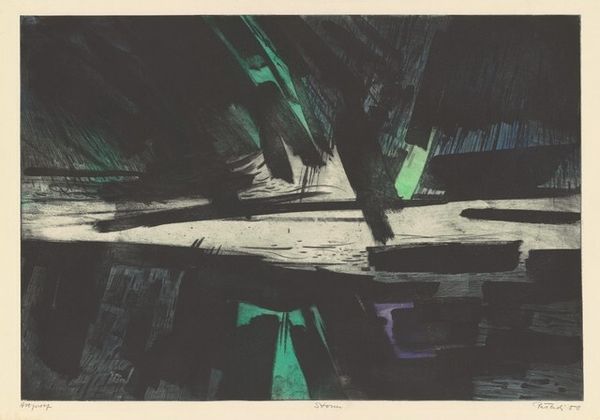
Dimensions: image: 11.9 x 17 cm (4 11/16 x 6 11/16 in.) sheet: 12.7 x 17.7 cm (5 x 6 15/16 in.)
Copyright: National Gallery of Art: CC0 1.0
Curator: There’s a haunting beauty in Walker Evans’ "Roadside Sign," a gelatin silver print collage dating back to 1929. What's your first impression of it? Editor: It’s like a visual poem of urban decay. A collision of decaying billboards, remnants of advertisements—the layering effect speaks to the transient nature of information in the modern world. There’s almost an elegiac mood. Curator: Absolutely. Evans was a master at capturing the American vernacular. The jumbled letters—the large, graffitied ‘Gas’ obscures a faded advertisement reading "Any Old”—they become almost archetypal symbols here. The letter 'A' in particular seems deliberately placed, looming over the collage's lower half. Editor: I find it interesting how Evans employs collage, not to create a futuristic vision like the Futurists were doing at the time, but instead to record the grittiness of the present. What's also worth noting is how the composition avoids idealization; the ripped posters, the crude typography - they reflect economic anxiety during this period. Curator: It reminds us that images carry psychological weight far beyond their intended purpose. The ghostly letters layered beneath imply the past seeping into the present, while the added graffiti boldly marks change—perhaps, even a sense of cultural rebellion against a visual environment that is ever-changing, and ever-present. Editor: Speaking of visual environments, the high contrast in Evans' silver gelatin print brings out the textural richness, mimicking the real feel of peeling paint and aged paper on a physical wall. His choice to highlight that aesthetic emphasizes his perspective as an observant recorder of culture rather than simply being an artist imposing ideas upon his subjects. Curator: Looking closely, it’s also compelling to note Evans’ technique, how it is nearly documentary. He isn't merely capturing an image, but capturing its whole social story as it presents itself, revealing much about societal attitudes towards both advertising and art, in the inter-war period. Editor: A key take-away might be just how intentionally, Walker Evans selected his images - to what end, do you think? Curator: It feels, on reflection, like he's prompting us to look harder at the images we overlook every day. Editor: Indeed, and through that, discover unexpected beauty and powerful stories that have been with us all along.
Comments
No comments
Be the first to comment and join the conversation on the ultimate creative platform.
